Diagnosis can be challenging, but it’s key to successful treatment
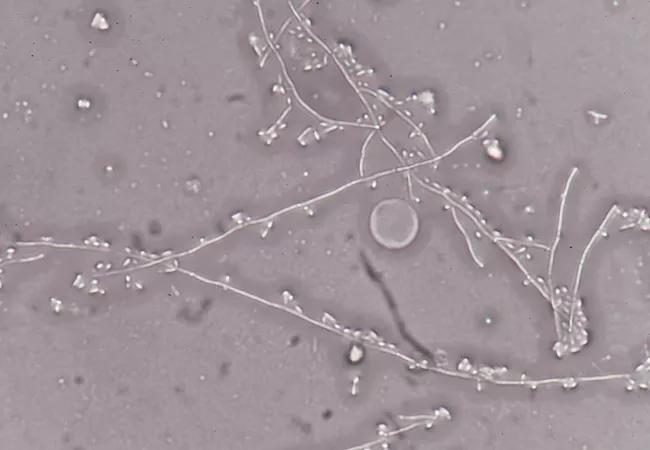
By Oluwatosin Goje, MD, MSCR, and Jessian L. Munoz, MD, PhD
Cleveland Clinic is a non-profit academic medical center. Advertising on our site helps support our mission. We do not endorse non-Cleveland Clinic products or services. Policy
Although vulvovaginitis has several possible causes, the typical presenting symptoms are similar regardless of the cause: itching, burning and vaginal discharge. Physical examination often reveals atrophy, redness, excoriations and fissures in the vulvovaginal and perianal areas. Determining the cause is key to successful treatment. This article reviews the diagnosis and treatment of many common and less common infectious and noninfectious causes of vulvovaginitis, the use of special tests and the management of persistent cases.
Vulvar and vaginal symptoms are most commonly caused by local infections, but other causes also must be considered, including several noninfectious ones (Table 1).

Challenges in diagnosing vulvovaginitis are many and include distinguishing contact from allergic dermatitis, recognizing vaginal atrophy and recognizing a parasitic infection. Determining whether a patient has an infectious process is important so that antibiotics can be used only when truly needed.
Foreign bodies in the vagina should also be considered, especially in children, as should sexual abuse. A 15-year retrospective review of prepubertal girls presenting with recurrent vaginal discharge found that sexual abuse might have been involved in about 5 percent of cases.
Systemic diseases, such as eczema and psoriasis, may also present with gynecologic symptoms.
Heavy vaginal discharge may also be normal. This situation is a diagnosis of exclusion, but is important to recognize in order to allay the patient’s anxiety and avoid unnecessary treatment.
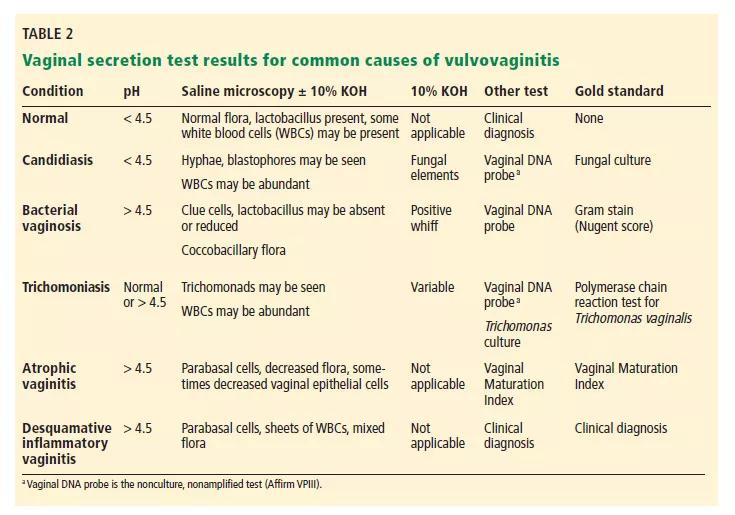
A thorough history and physical examination are always warranted. Simple tests of vaginal secretions can often determine the diagnosis (Table 2). Vaginal secretions should be analyzed in the following order:
Testing the pH. The pH can help determine likely diagnoses and streamline further testing (Figure 1).
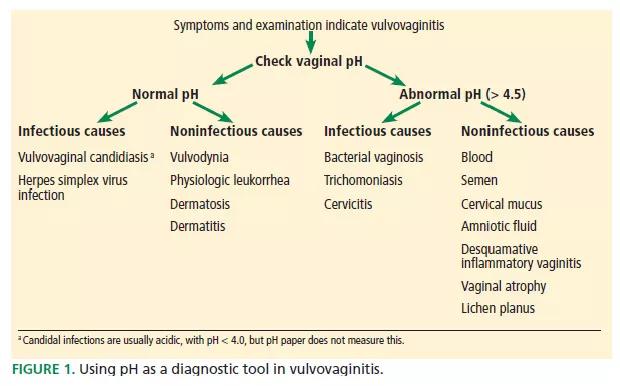
Saline microscopy. Some of the vaginal discharge sample should be diluted with one or two drops of normal saline and examined under a microscope, first at × 10 magnification, then at × 40. The sample should be searched for epithelial cells, blood cells, “clue” cells (i.e., epithelial cells with borders studded or obscured by bacteria), and motile trichomonads.
10 percent KOH whiff test and microscopy. To a second vaginal sample, a small amount of 10 percent potassium hydroxide should be added, and the examiner should sniff it. An amine or fishy odor is a sign of bacterial vaginosis.
The sample should next be examined under a microscope for fungal elements (Figure 2). However, not finding trichomonads or fungal elements by either saline or 10 percent KOH microscopy does not rule out such infections.
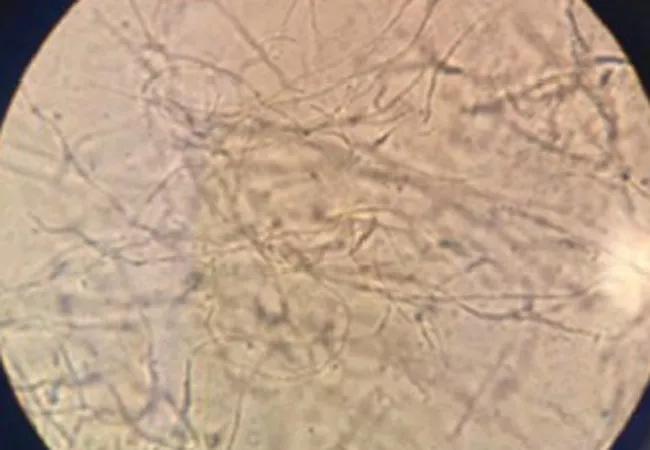
FIGURE 2. Potassium hydroxide 10% added to a vaginal sample and microscopy performed at × 40 magnification reveals yeast.
If pH paper, KOH and a microscope are unavailable, other point-of-care tests can be used for specific conditions as discussed below.
Infectious causes of vulvovaginitis include bacterial vaginosis, candidiasis, trichomoniasis and herpes simplex virus (HSV) infection.
Bacterial vaginosis is the most common vaginal disorder worldwide. It has been linked to preterm delivery, intra-amniotic infection, endometritis, postabortion infection and vaginal cuff cellulitis after hysterectomy. It may also be a risk factor for human immunodeficiency virus (HIV) infection.
The condition reflects a microbial imbalance in the vaginal ecosystem, characterized by depletion of the dominant hydrogen peroxide-producing lactobacilli and overgrowth of anaerobic and facultative aerobic organisms such as Gardnerella vaginalis, Mycoplasma hominis, Atopobium vaginae, and Prevotella and Mobiluncus species.
Diagnosis of bacterial vaginosis
The Amsel criteria consist of the following:
Three of the four criteria must be present for a diagnosis of bacterial vaginosis. This method is inexpensive and provides immediate results in the clinic.
The Nugent score, based on seeing certain bacteria from a vaginal swab on Gram stain microscopy, is the diagnostic standard for research.
DNA tests. Affirm VPIII (BD Diagnostics, Sparks, MD) is a nonamplified nucleic acid probe hybridization test that detects Trichomonas vaginalis, Candida albicans and G vaginalis. Although it is more expensive than testing for the Amsel criteria, it is commonly used in private offices because it is simple to use, gives rapid results and does not require a microscope. Insurance pays for it when the test is indicated, but we know of a patient who received a bill for approximately $500 when the insurance company thought the test was not indicated.
In a study of 109 patients with symptoms of vulvovaginitis, the Affirm VPIII was found comparable to saline microscopy when tested on residual vaginal samples. Compared with Gram stain using Nugent scoring, the test has a sensitivity of 87.7 percent to 95.2 percent and a specificity of 81 percent to 99.1 percent for bacterial vaginosis.
In 323 symptomatic women, a polymerase chain reaction (PCR) assay for bacterial vaginosis was 96.9 percent sensitive and 92.6 percent specific for bacterial vaginosis, and Affirm VPIII was 90.1 percent sensitive and 67.6 percent specific, compared with a reference standard incorporating Nugent Gram-stain scores and Amsel criteria.
Management of bacterial vaginosis
Initial treatment. Bacterial vaginosis can be treated with oral or topical metronidazole, oral tinidazole, or oral or topical clindamycin. All options offer equivalent efficacy as initial treatments, so the choice may be based on cost and preferred route of administration.
Treatment for recurrent disease. Women who have three or more episodes in 12 months should receive initial treatment each time as described above and should then be offered additional suppressive therapy with 0.75 percent metronidazole intravaginal gel two times a week for four months. A side effect of therapy is vulvovaginal candidiasis, which should be treated as needed.
In a multicenter study, Sobel et al randomized patients who had recurrent bacterial vaginosis to twice-weekly metronidazole gel or placebo for 16 weeks after their initial treatment. During the 28 weeks of follow-up, recurrences occurred in 51 percent of treated women versus 75 percent of those on placebo.
Another option for chronic therapy is oral metronidazole and boric acid vaginal suppositories. Reichman et al treated women with oral metronidazole or tinidazole 500 mg twice a day for seven days, followed by vaginal boric acid 600 mg daily for 21 days. This was followed by twice-weekly vaginal metronidazole gel for 16 weeks. At follow-up, the cure rate was 92 percent at seven weeks, dropping to 88 percent at 12 weeks and 50 percent at 36 weeks. Patients with recurrent bacterial vaginosis despite therapy should be referred to a vulvovaginal or infectious disease specialist.
Vulvovaginal candidiasis is the second most common cause of vaginitis.
Diagnosis of candidiasis. Vulvovaginal candidiasis can be clinically diagnosed on the basis of cottage cheese-like clumpy discharge; external dysuria (a burning sensation when urine comes in contact with the vulva); and vulvar itching, pain, swelling and redness. Edema, fissures and excoriations may be seen on examination of the vulva.
Saline microscopy (Figure 2) with the addition of 10 percent KOH may reveal the characteristic fungal elements, but its sensitivity is only 50 percent.
Fungal culture remains the gold standard for diagnosis and is needed to determine the sensitivity of specific strains of Candida to therapy.
DNA tests can also be helpful. In a study of patients with symptomatic vaginitis, Affirm VPIII detected Candida in 11 percent of samples, whereas microscopy detected it in only 7 percent. Another study found that Affirm VPIII produced comparable results whether the sample was collected from residual vaginal discharge found on the speculum or was collected in the traditional way (by swabbing).
Cartwright et al compared the performance of a multiplexed, real-time PCR assay and Affirm VPIII in 102 patients. PCR was much more sensitive (97.7 percent versus 58.1 percent) but less specific (93.2 percent versus 100 percent), with culture serving as the gold standard.
Management of candidiasis. Uncomplicated cases can be managed with prescription or over-the-counter topical or oral antifungal medications for one to seven days, depending on the medication. However, most of the common antifungals may not be effective against non-albicans Candida.
In immunosuppressed patients and diabetic patients, if symptoms do not improve with regular treatment, a vaginal sample should be cultured for C albicans. If the culture is positive, the patient should be treated with fluconazole 150 mg orally every three days for three doses.
Patients with recurrent episodes (three or more in 12 months) should follow initial treatment with maintenance therapy of weekly fluconazole 150 mg orally for six months.
Non-albicans Candida may be azole-resistant, and fungal culture and sensitivity should be obtained.
Sobel et al documented successful treatment of non-albicans Candida using boric acid and flucytosine. Phillips documented successful use of compounded amphotericin B in a 50-mg vaginal suppository for 14 days. Therefore, in patients who have Candida species other than C albicans, treatment should be one of the following:
Boric acid is readily available, but flucytosine vaginal cream and amphotericin B vaginal suppositories usually must be compounded by a pharmacist.
All that itches is not yeast. Patients with persistent itching despite treatment should be referred to a specialist to search for another cause.
The incidence of T vaginalis infection is higher than that of Neisseria gonorrhoeae and Chlamydia trachomatis combined, with an estimated 7.4 million new cases occurring in the year 2000 in the United States. Infection increases the sexual transmission of HIV. It is often asymptomatic and so is likely underdiagnosed.
Diagnosis. Vaginal pH may be normal or elevated (> 4.5).
Direct microscopy. Observation by saline microscopy of motile trichomonads with their characteristic jerky movements is 100 percent specific but only 50 percent sensitive. Sensitivity is reduced by delaying microscopy on the sample by as little as 10 minutes.
The incidental finding of T vaginalis on a conventional Papanicolaou (Pap) smear has poor sensitivity and specificity, and patients diagnosed with T vaginalis by conventional Pap smear should have a second test performed. The liquid-based Pap test is more accurate for microscopic diagnosis, and its results can be used to determine if treatment is needed (sensitivity 60 percent to 90 percent; specificity 98 percent to 100 percent).
Culture. Amplification of T vaginalis in liquid culture usually provides results within three days. It is more sensitive than microscopy but less sensitive than a nucleic acid amplification test: compared with a nucleic acid amplification test, culture is 44 percent to 75 percent sensitive for detecting T vaginalis and 100 percent specific. Culture is the preferred test for resistant strains.
Nonculture-based or nucleic acid tests do not require viable organisms, so they allow for a wider range of specimen storage temperatures and time intervals between collection and processing. This quality limits them for testing treatment success; if performed too early, they may detect nonviable organisms. A two-week interval is recommended between the end of treatment and retesting.
Nonamplified tests such as Affirm VPIII and the Osom Trichomonas Test (Sekisui Diagnostics, Lexington, MA) are 40 percent to 95 percent sensitive, depending on the test and reference standard used, and 92 percent to 100 percent specific.
Nucleic acid amplification tests are usually not performed as point-of-care tests. They are more expensive and require special equipment with trained personnel. Sensitivities range from 76 percent to 100 percent, making these tests more suitable for screening and testing of asymptomatic women, in whom the concentration of organisms may be lower.
Management of trichomoniasis. Treatment is a single 2-g oral dose of metronidazole or tinidazole. If initial treatment is ineffective, an additional regimen can be either of the following:
Patients allergic to nitroimidazoles should be referred for desensitization. If these treatments are unsuccessful, the patient should be referred to an infectious disease specialist or gynecologist who specializes in vulvovaginal disorders. Treatment failure is uncommon and is usually related to noncompliance, reinfection or metronidazole resistance. The U.S. Centers for Disease Control and Prevention offers testing for resistance by request.
Reportedly successful regimens for refractory trichomoniasis include 14 days of either:
Herpes simplex virus (HSV- and HSV-2) causes lifelong infection. About 50 million people in the United States are infected with HSV-2, the most common cause of recurrent infections. Owing to changes in sexual practices, an increasing number of young people are acquiring anogenital HSV-1 infection.
Diagnosis. Diagnosis may be difficult because the painful vesicular or ulcerative lesions may not be visible at the time of presentation. Diagnosis is based on specific virologic and serologic tests. Nonspecific tests (e.g., Tzanck smear, direct immunofluorescence) are neither sensitive nor specific and should not be relied on for diagnosis. HSV culture or HSV-PCR testing of a lesion is preferred. The sensitivity of viral culture can be low and is dependent on the stage of healing of a lesion and obtaining an adequate sample.
Accurate type-specific HSV serologic assays are based on HSV-specific glycoprotein G1 (HSV-1) and glycoprotein G2 (HSV-2). Unless a patient’s serologic status has already been determined, serologic testing should be done concurrently with HSV culture or PCR testing. Serologic testing enables classification of an infection as primary, nonprimary or recurrent. For example, a patient with a positive HSV culture and negative serology most likely has primary HSV infection, and serologic study should be repeated after six to eight weeks to assess for seroconversion.
Immunoglobulin M (IgM) testing for HSV-1 or HSV-2 is not diagnostic or type-specific and may be positive during recurrent genital or oral episodes of herpes.
Management of herpes. In general, antiviral medications (e.g., acyclovir, valacyclovir, famciclovir) are effective for managing HSV. Episodic or continuous suppression therapy may be needed for patients experiencing more than four outbreaks in 12 months. Patients who do not respond to treatment should be referred to an infectious disease specialist and undergo a viral culture with sensitivities.
Desquamative inflammatory vaginitis is a chronic vaginal disorder of unknown cause. It is a diagnosis of exclusion, and some patients may have a superimposed bacterial infection. It occurs mostly in perimenopausal woman and is often associated with low estrogen levels.
Diagnosis. Patients may report copious green-yellow mucoid discharge, vulvar or vaginal pain, and dyspareunia. On examination, the vulva may be erythematous, friable and tender to the touch. The vagina may have ecchymoses, be diffusely erythematous and have linear lesions. Mucoid or purulent discharge may be seen.
The vaginal pH is greater than 4.5.
Saline microscopy shows increased parabasal cells and leukorrhea (Figure 3).
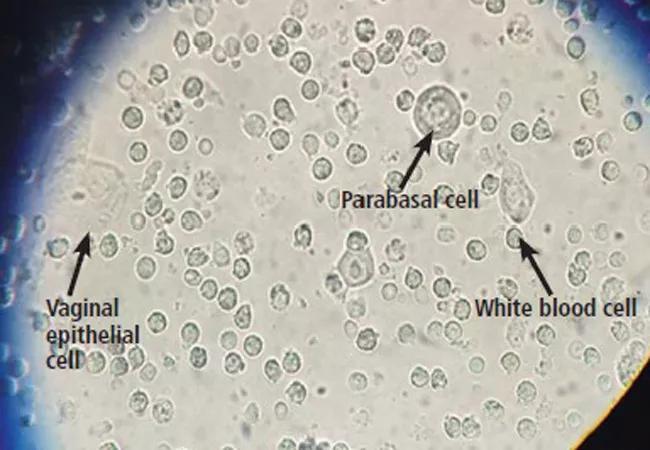
FIGURE 3. On saline microscopy, desquamative inflammatory vaginitis shows the classic findings of leukorrhea, epithelial cells, and parabasal cells (× 40).
Diagnosis is based on all of the following:
Treatment involves use of 2 percent intravaginal clindamycin or 10 percent intravaginal compounded hydrocortisone cream for four to six weeks. Patients who are not cured with single agent therapy may benefit from compounded clindamycin and hydrocortisone, with estrogen added to the formulation for hypoestrogenic patients.
Atrophic vaginitis is often seen in menopausal or hypoestrogenic women. Presenting symptoms include vulvar or vaginal pain and dyspareunia.
Diagnosis. On physical examination, the vulva appears pale and atrophic, with narrowing of the introitus. Vaginal examination may reveal a pale mucosa that lacks elasticity and rugation. The examination should be performed with caution, as the vagina may bleed easily. The vaginal pH is usually elevated.
Saline microscopy may show parabasal cells and a paucity of epithelial cells (Figure 4).
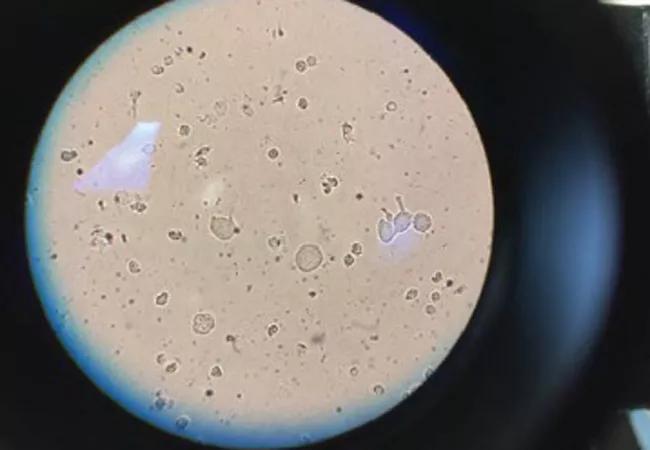
FIGURE 4. Atrophic vaginitis. Parabasal cells and a few immature squamous epithelial cells, rounded, with a large nucleus-to-cytoplasm ratio.
The Vaginal Maturation Index is an indicator of the maturity of the epithelial cell types being exfoliated; these normally include parabasal (immature) cells, intermediate and superficial (mature) cells. A predominance of immature cells indicates a hypoestrogenic state.
Infection should be considered and treated as needed.
Treatment. Patients with no contraindication may benefit from systemic hormone therapy or topical estrogen, or both.
Contact dermatitis is classified into two types:
Irritant dermatitis, caused by the destructive action of contactants, e.g., urine, feces, topical agents, feminine wipes.
Allergic dermatitis, also contactant-induced, but immunologically mediated.
If a diagnosis cannot be made from the patient history and physical examination, biopsy should be performed.
Treatment of contact dermatitis involves removing the irritant, hydrating the skin with sitz baths and using an emollient (e.g., petroleum jelly) and midpotent topical steroids until resolution. Some patients benefit from topical immunosuppressive agents (e.g., tacrolimus). Patients with severe symptoms may be treated with a tapering course of oral steroids for five to seven days. Recalcitrant cases should be referred to a specialist.
Vulvovaginal lichen planus, a subtype of lichen planus, is characterized by erosive, papular or hypertrophic lesions on the vulva, with or without vaginal involvement.
Lichen sclerosus is a benign, chronic, progressive dermatologic condition characterized by marked inflammation, epithelial thinning and distinctive dermal changes accompanied by pruritus and pain.
Treatment. High-potency topical steroids are the mainstay of therapy for lichen disease. Although these are not infectious processes, superimposed infections (mostly bacterial and fungal) may also be present and should be treated.
Dr. Goje leads the Gynecologic Infection Diseases program in the Ob/Gyn & Women’s Health Institute. Jessian L. Munoz, MD, PhD, is a resident in the institute.
This article originally appeared in Cleveland Clinic Journal of Medicine. Read the full version in the December 2017 issue. References and additional figures are included in the journal article.

How we create obstacles for sexual, reproductive and menopausal healthcare despite our best intentions

One approved non-hormonal therapy and another on the horizon reduce vasomotor symptoms

Some post-menopausal patients may benefit from treatment

Study shows higher rates of complications, laparotomies among non-white women

Proper diagnosis and treatment require a careful mix of patient and clinical considerations

Study uniquely powered to compare adverse effects

What is female hypoactive sexual desire disorder and how is it treated?

Indications and best-practice recommendations for the use of androgen therapy